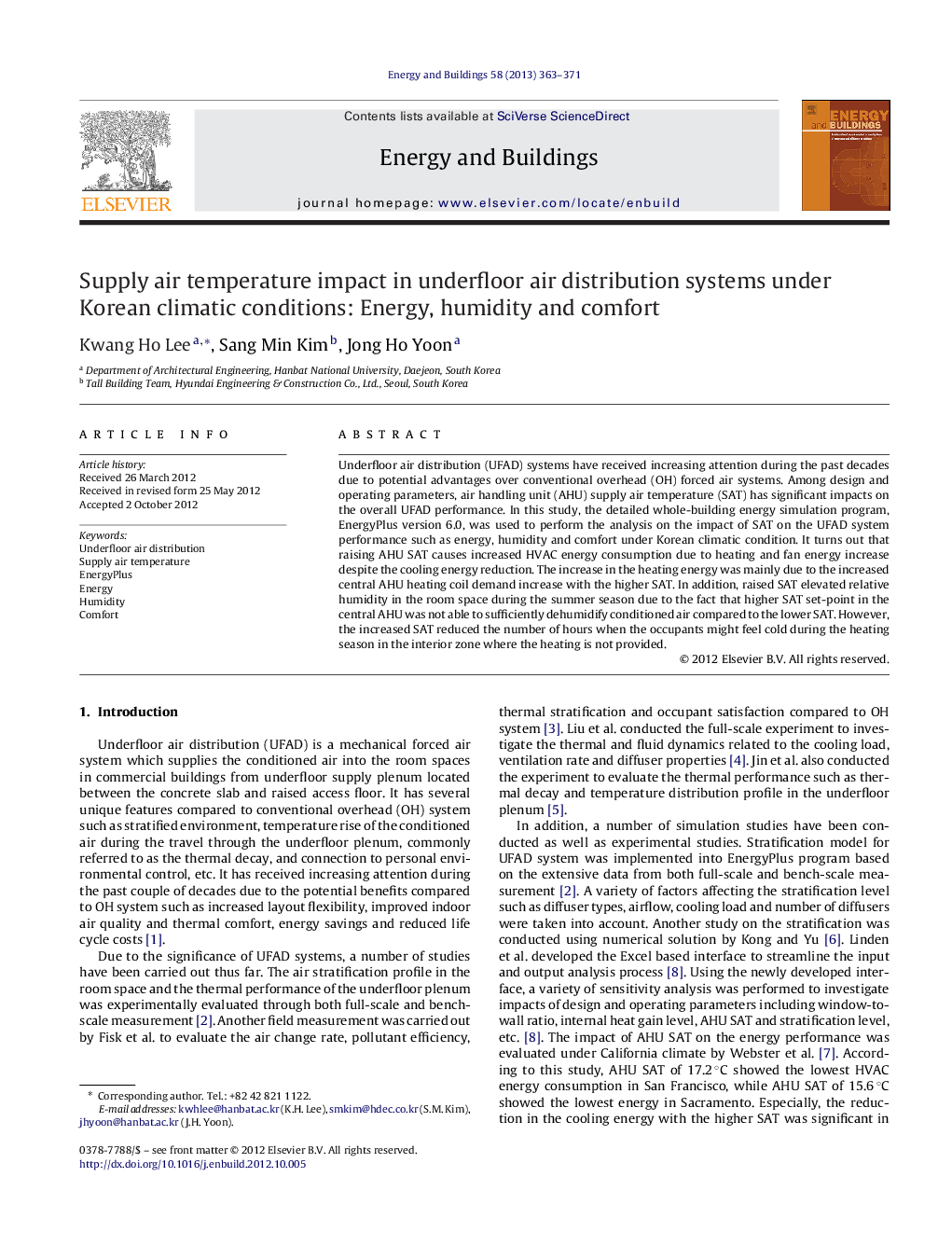| Article ID | Journal | Published Year | Pages | File Type |
|---|---|---|---|---|
| 263550 | Energy and Buildings | 2013 | 9 Pages |
Underfloor air distribution (UFAD) systems have received increasing attention during the past decades due to potential advantages over conventional overhead (OH) forced air systems. Among design and operating parameters, air handling unit (AHU) supply air temperature (SAT) has significant impacts on the overall UFAD performance. In this study, the detailed whole-building energy simulation program, EnergyPlus version 6.0, was used to perform the analysis on the impact of SAT on the UFAD system performance such as energy, humidity and comfort under Korean climatic condition. It turns out that raising AHU SAT causes increased HVAC energy consumption due to heating and fan energy increase despite the cooling energy reduction. The increase in the heating energy was mainly due to the increased central AHU heating coil demand increase with the higher SAT. In addition, raised SAT elevated relative humidity in the room space during the summer season due to the fact that higher SAT set-point in the central AHU was not able to sufficiently dehumidify conditioned air compared to the lower SAT. However, the increased SAT reduced the number of hours when the occupants might feel cold during the heating season in the interior zone where the heating is not provided.
► Elevated AHU SAT caused HVAC energy consumption. ► Heating energy increase was due to increased AHU heating coil usage at higher SAT. ► Elevated SAT increased relative humidity in room space during cooling season. ► Elevated SAT reduced number of hours when occupants feel cold in interior zone. ► Trade-off between energy and comfort should be considered when selecting AHU SAT.
